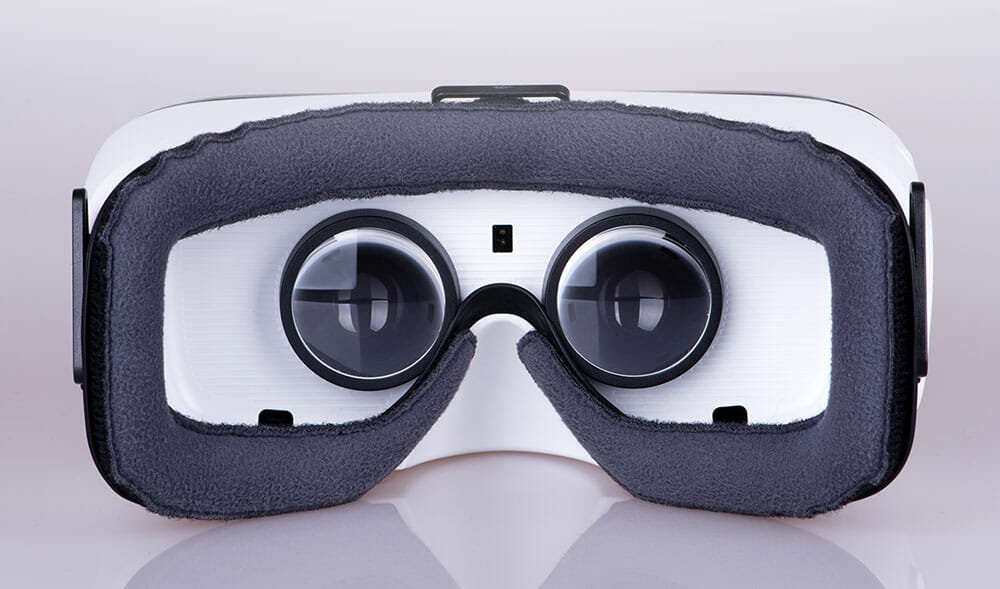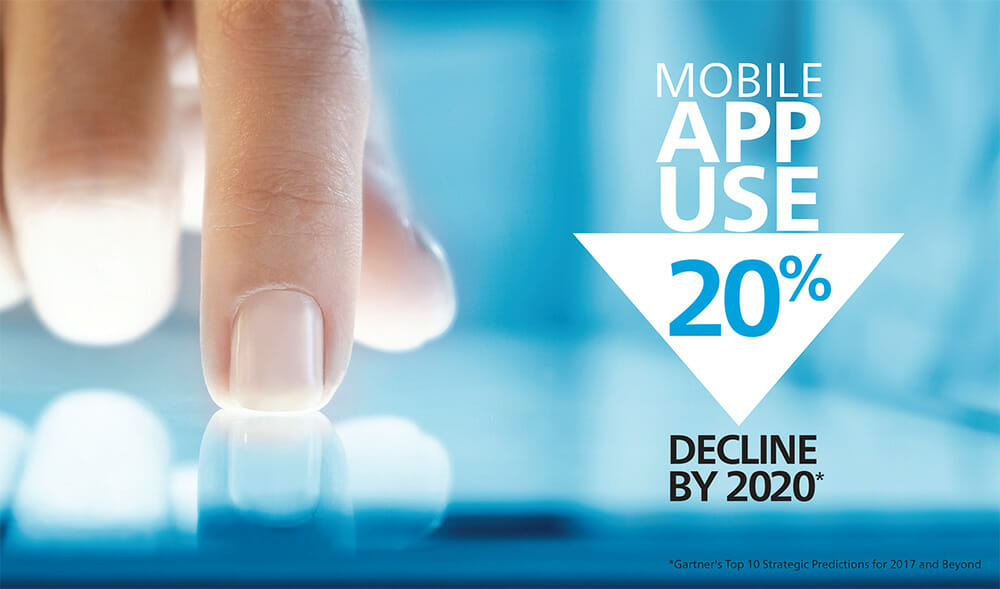Five P&C Hot Topics and the Trends Fueling Them
Technology Transformation
Does virtual reality have practical applications for the P&C and collision repair industries? While it may be too soon to say what the overall impact will be, we are seeing interesting applications that go beyond entertainment. Virtual reality is being used to train doctors, create architectural models, and test the safety of new car models in a virtual setting before manufacturing them. It’s easier to see the potential benefits of augmented reality. It could, for instance, be used to guide complex repairs in high-risk environments, possibly minimizing injuries. In addition, as automotive repairs become more complex, technology like this could be used to ensure repairs are done correctly so that vehicles are safe to return to the road. Meanwhile, the Internet of Things is experiencing explosive growth. Markets and Markets predicts a compound annual growth rate of 33 percent through 2021—an increase in market value of more than $500 billion.

Connected home devices can enhance safety, security and energy efficiency, but do they present a cybersecurity risk? And will people need insurance for that? Wearables can help prevent on-the-job injuries and facilitate a return to health, but there is still much to be worked out in terms of privacy and data ownership. And connected cars are delivering real-time information about the status of a vehicle as well as driving new insurance models like usage-based insurance. We’d be remiss if we didn’t mention autonomous vehicles. We’re closely following both advancement and adoption of the technology across the world. In fact, a trial is getting underway here in our hometown of San Diego, and we can’t help but wonder what Glenn Mitchell would think!
Operational Excellence
It’s been four short years since IBM’s Watson famously beat Ken Jennings at Jeopardy, and in that time, it’s been commercialized and put to practical use fighting cancer, building legal cases and preventing cyber crime. Cognitive computing technology like Watson is being used to make sense of big data—and having a big impact across verticals, including the insurance industry.

Closer to home, advanced analytics and visualized data, when applied at key points throughout the claims lifecycle, are helping insurers make more informed decisions around claims. This could potentially save time, reduce costs and lead to better outcomes, both for their businesses and for their customers.
"Cognitive computing technology like Watson is being used to make sense of big data—and having a big impact across verticals, including the insurance industry."
Behind the scenes, insurers are moving both legacy systems and back-office operations to cloud infrastructure. DevOps is another IT-centric trend. More of a cultural movement than a methodology, DevOps encourages communications and collaboration between development and operations and uses automation to deliver quality software quickly.

Trends that are not new but remain as relevant as ever—insurers continue to seek ways to use technology to streamline workflows, automate simple, repetitive tasks, reduce administrative costs and navigate an incredibly dynamic regulatory environment. And last, but by no means least, blockchain, the distributed ledger technology behind the digital currency Bitcoin, is finally coming into its own. Deloitte named it a key trend for 2017, saying, “Blockchain may improve data storage and protection, and enable more efficient policy execution via smart contracts.” IBM, for its part, is building an entire ecosystem around it.
The Evolution of Work
Henry Ford wasn’t the first person to institute the five-day workweek, but he certainly popularized the model when he implemented it in his factories in 1916. A hundred years or so later, manufacturers are starting to turn from assembly lines to automation. The impact of automation is yet to be seen: a McKinsey study suggests that while 45 percent of the 2,000 work activities they looked at could be automated with currently available technologies, less than five percent of occupations can be entirely automated. In addition, they caution that those changes could take years.
 Automation isn’t the only trend at play. Fueled by technology, the gig economy, the share economy and on-demand workforce, in all their various permutations, continue to grow. Intuit predicts that more than 40 percent of the workforce will be comprised of contingent workers by 2020. Adding to the complexity, the insurance workforce is in flux. 70,000 insurance professionals are expected to retire this year. One way to combat that loss of institutional knowledge and experience is to embed access to relevant information right there within the claims workflows. And while this may help incoming millennial talent get upto speed, insurers will need to implement new programs to attract and retain them—especially since 65 percent of them do not have a positive take on the industry.
Automation isn’t the only trend at play. Fueled by technology, the gig economy, the share economy and on-demand workforce, in all their various permutations, continue to grow. Intuit predicts that more than 40 percent of the workforce will be comprised of contingent workers by 2020. Adding to the complexity, the insurance workforce is in flux. 70,000 insurance professionals are expected to retire this year. One way to combat that loss of institutional knowledge and experience is to embed access to relevant information right there within the claims workflows. And while this may help incoming millennial talent get upto speed, insurers will need to implement new programs to attract and retain them—especially since 65 percent of them do not have a positive take on the industry.

Another thing to think about: members of the enterprise, who as consumers have on-demand access to just about everything in their personal lives, will demand the same of their business applications.
Customer Experience
In their 2017 U.S. Property & Casualty Insurance Outlook, EY provides a strategic roadmap for driving profitable growth. Number one among their four priorities is a focus on customer-driven innovation. Today, the average consumer owns 3.64 connected devices. We all recognize that this ubiquity of digital devices has changed the way consumers choose to interact. Now, the nature of digital interactions themselves is changing. The use of voice-first browsing devices like Google Home and Amazon Echo is on the rise: Gartner predicts that by 2020, 30 percent of web browsing will be done without a screen at all.

Further, Gartner predicts that by 2020 there will be a 20 percent decline in mobile app use. Instead, more consumers are turning to chatbots that don’t require an app interface. Chatbots use artificial intelligence and natural language processing to automate simple tasks and interactions, often between company and customer. In many cases, the experience is so authentic, that the customer might not realize a chatbot is on the other end. Will human interactions become a thing of the past? Or perhaps we’ll see a premium placed on them? One thing is certain—listening to customers is more important than ever, as is nurturing a culture of innovation that enables a rapid and effective response to customers’ ever-evolving wants and needs, both in the way they communicate and for products and services.
Corporate Culture as Business Strategy
What the unprecedented pace of technology transformation suggests is that companies of all types, including those in the P&C insurance ecosystem, must innovate to respond to changing consumer wants and needs. Companies with a culture of innovation may have a competitive advantage in this regard.

According to a PWC report, engaged employees put in 57 percent more effort on the job and are 87 percent less likely to resign than disengaged employees, so an engaged workforce can have an important impact on a company’s overall success. But how do companies create an engaged workforce? As MG Kristian, Senior Vice President of Human Resources at Mitchell advises, “It takes a conscious commitment from leadership across the company and deliberate action to drive culture into all aspects of the business.” Engaging millennials is becoming more important than ever. They are expected to make up 46 percent of the U.S. workforce by 2020, and according to a Deloitte study, tying corporate social responsibility to their own values and volunteerism is an important component of the engagement equation.
CIOs and CTOs are challenged to be technology visionaries, to foster innovation and create an engaged and effective workforce.
From an IT standpoint, CIOs and CTOs are also under pressure to create a culture of innovation that drives employee engagement. It’s a delicate balance that Mitchell CTO Erez Nir sums up nicely: “We are challenged to be technology visionaries, to foster innovation and create an engaged and effective workforce, and we must do all this while also keeping pace with advances in technologies and evolving modern infrastructure that supports company strategy and objectives.”

